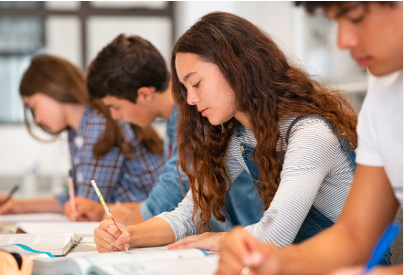In today’s classrooms, education technology (EdTech) is playing a powerful role in reshaping how students learn. Instead of relying only on traditional lectures, schools are embracing tools that allow students to take a more active role in their own learning journey. This shift toward student-centered learning encourages learners to explore, collaborate, and grow based on their personal needs and interests.
What Is Student-Centered Learning?
Student-centered learning is a teaching approach that focuses on the individual learner. It allows students to set goals, choose how they learn best, and reflect on their progress. In this model, the teacher acts as a guide rather than the sole source of information. The emphasis is on participation, problem-solving, and critical thinking—skills that are essential in today’s world.
How EdTech Supports This Approach
Modern education technology offers a variety of tools that support this learner-first method. These tools give students more control over how and when they learn, helping them stay engaged and motivated.
1. Personalized Learning Platforms
Many online platforms use intelligent design to adjust lessons based on a student’s progress. If a learner is struggling with a topic, the system offers extra support. If they are ahead, it provides more challenging content. This flexibility keeps learning at the right pace for each individual.
2. Interactive Learning Apps
From language games to science simulations, interactive apps make learning fun and hands-on. These resources encourage exploration, trial and error, and creativity. Students can experiment and receive immediate feedback—without fear of making mistakes.
3. Collaborative Tools
Digital whiteboards, shared documents, and video conferencing allow students to work together, even when they’re not in the same room. Collaboration helps learners build communication and teamwork skills while encouraging them to share diverse perspectives.
4. Self-Paced Courses
Not all students learn at the same speed. Self-paced online courses let learners revisit lessons, pause when needed, or move ahead if they’re ready. This flexibility helps reduce pressure and supports deeper understanding.
5. Access to Real-World Resources
Through virtual field trips, recorded lectures from experts, and curated educational videos, students have access to global knowledge at their fingertips. These resources expand classroom learning and help students connect topics to real-life situations.
Benefits of Student-Centered Learning with EdTech
When students have a say in how they learn, they tend to be more engaged and take greater responsibility for their education. EdTech tools help develop important life skills like decision-making, adaptability, and self-motivation. Teachers also benefit—they can focus more on mentoring and less on routine instruction.
Final Thoughts
EdTech is not just a trend—it’s a transformative way to support students in becoming lifelong learners. By placing students at the center of the learning experience and giving them the tools to succeed, schools can nurture confident, curious, and capable individuals. With thoughtful integration of technology, education becomes more inclusive, personalized, and future-ready.














